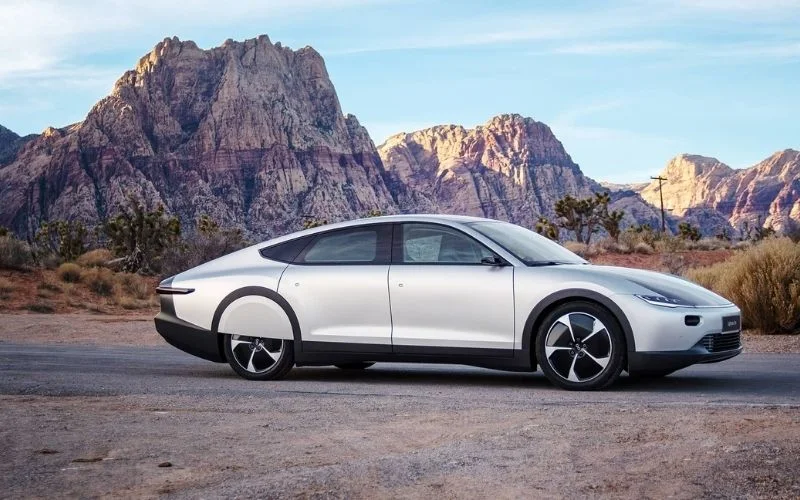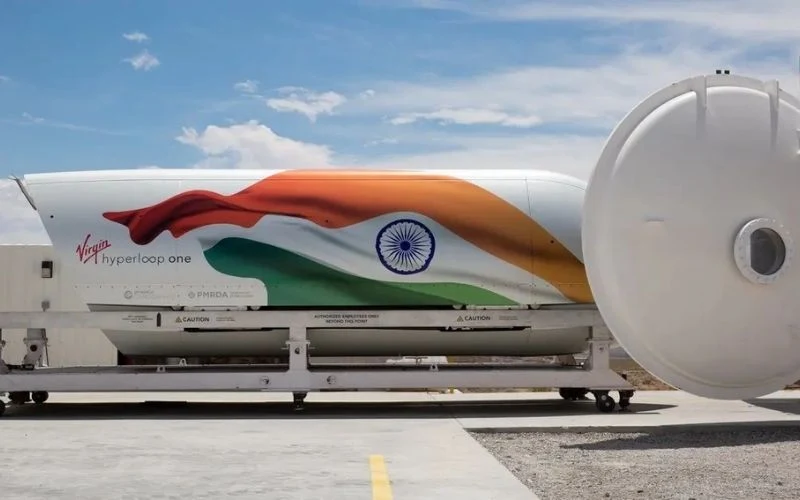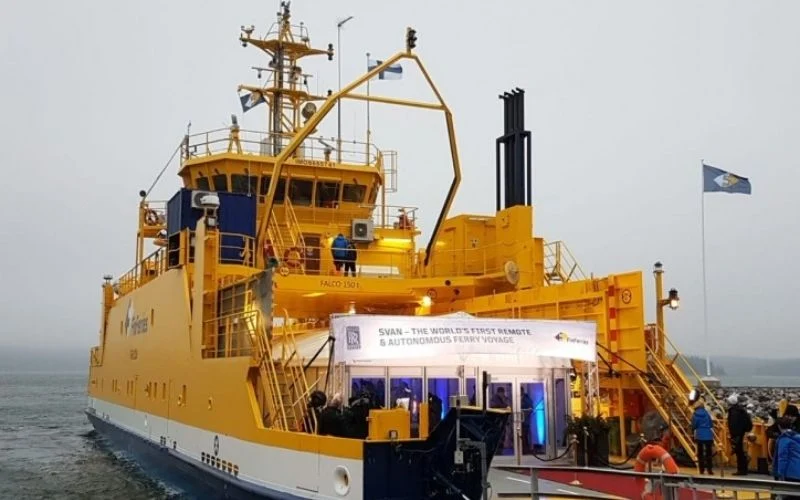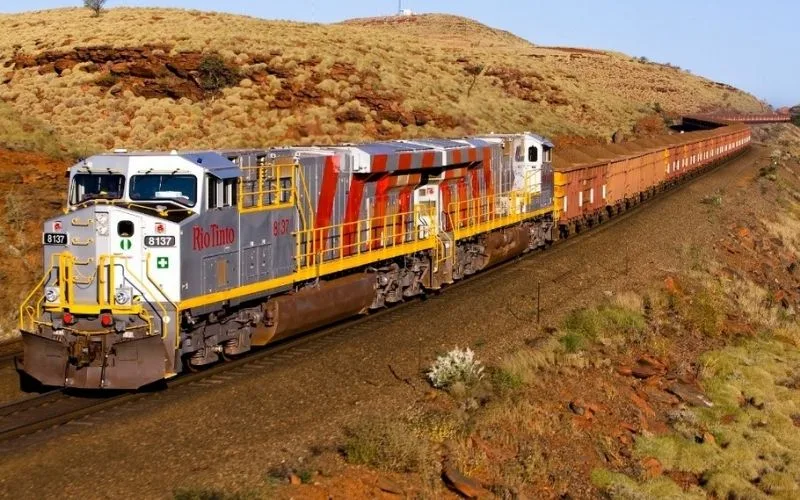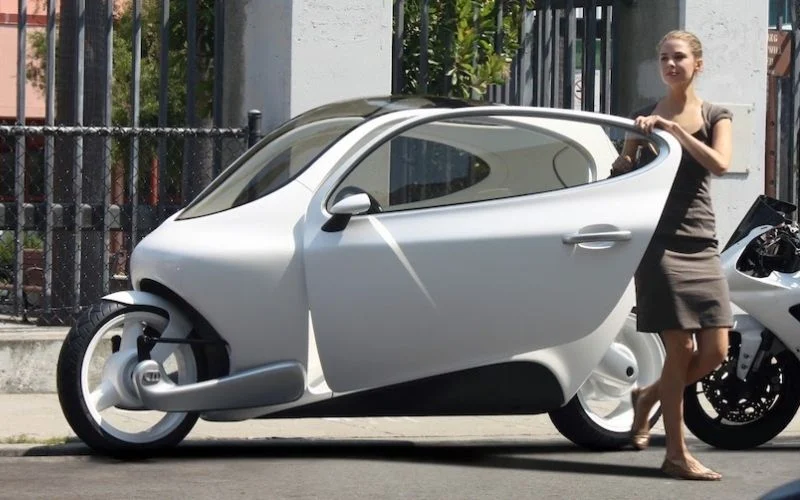A flying car colliding with a jetpack owner is one of the kind of accidents we will one day deal with. We talk about the future of travel, moving around the city and transporting goods.
{getToc} $title={Table of Contents}
Before the climate summit in Glasgow, the International Energy Agency (IEA) published the roadmap "Net Zero to 2050", which contains very radical methods for achieving carbon neutrality in the world. For example, experts advise to completely abandon gasoline passenger cars by 2035. So far, the most realistic alternative is electric cars.
The future of electric cars
Electric vehicles will definitely influence how the transport of the future will be and what the transport infrastructure will look like. But this will require certain conditions.
So, electric vehicles will not be able to fully replace their counterparts running on fossil fuels until they catch up with them in cost. The most important and expensive part of an electric car is the battery. Its capacity is growing by 7% every year. It is expected that by 2030 it will be more than 3000 GWh. The average price per 1kWh for a lithium-ion battery has fallen by 89% compared to 2010 and is $137. It is expected that by 2023 it will drop to $101.
The current pre-tax average retail price for an electric car is $47,000 compared to $22,800 for a gasoline car. Both types of cars are predicted to cost around $23,000 in 2026.
Political regulation favorably affects sales of electric cars. By 2030, the administration of US President Joe Biden intends to equalize the number of electric vehicles and cars with internal combustion engines on the country's roads. Norway has more ambitious plans to stop selling petrol and diesel cars as early as 2025. To do this, electric vehicles are promoted with the help of generous political and fiscal preferences: exemptions from VAT and registration fees, free parking.
One in 12 cars sold in Europe between April and June 2021 was battery-only. With hybrid models using both the engine and the battery, the figure rises to one in three.
Sales growth is also supported by new products from automakers.
Here are some of them expected in the next five years:
However, the spread of electric cars will not help to achieve full carbon neutrality, as long as electricity generated from coal, oil and natural gas is used to charge them. In this regard, the share of renewable sources, including solar and wind energy, is expected to increase to 80% by 2050.
Lightyear, a startup from the Netherlands, is developing an electric car that uses solar cells to generate electricity for travel up to 70 km after a day in the sun. It will be possible to buy an energy-efficient model already in 2022 for $175,000.
Travel of the future
A new era of airships?
Hybrid Air Vehicles has developed the Airlander, which uses helium as a lift gas to carry passengers and cargo up to 7,400 km. The Liverpool-Belfast flight will take 5 hours 20 minutes versus 50 minutes for a plane.
Lockheed Martin, Flying Whales and Atlas LTA also presented their retro-futuristic airship-style vehicles.
Despite the environmental friendliness of the flight itself, the updated airships do not bring us closer to “clean zero”, because the main source of helium production is oil and gas production.
Flying cars
The AirCar, powered by a BMW petrol engine, has a top speed of 170 km/h and can fly about 1,000 km with two passengers on board. It cannot take off vertically (vertically taking off cars do not need a runway, which saves space and time), and it cannot be called environmentally friendly and absolutely safe.
The German company Volocopter has introduced an unmanned air taxi with electric drive VoloCity. It is assumed that it will run between airports for vertical aircraft in major cities. In this regard, the company is working on the creation of the first vertiports based on the infrastructure of airports in Italy and France.
The first flights will be able to carry one passenger at a price of €300 already in 2022. But the company's ultimate goal, after testing the model in real flights and attracting customers, is to set a price comparable to a trip to Uber Black.
Flying cars could be on sale as early as 2024. But before their widespread use becomes a reality, rules of the air traffic will need to be developed to take into account the growing number of vehicles in order to ensure the safety of passengers and people on the ground. The state of New Hampshire was the first state in 2020 to approve the rules for the use of flying cars, allowing them to fly, but forbidding takeoff and landing over public roads.
Hyperloop
And while some researchers doubt the safety of such trips, others are planning to connect Abu Dhabi and Dubai using HyperloopTT and have already made the first successful trip of 500 m in the Virgin Hyperloop.
Space travel around the earth
Commercial space companies are preparing to enter a new market: suborbital flights from one point to another.
The most popular concept is Elon Musk's Starship project, designed to transport large payloads to Mars. The first Earth-to-Earth test flights will begin as early as 2022.
Virgin Galactic is working on the SpaceShip 3 project, the technical details of which have not yet been disclosed.
Both projects are designed to transport people and goods. But Astra, as part of the Rocket project, plans exclusively freight transportation.
Before the first people make a journey on a rocket, safety issues related to a possible engine failure and the problem of sonic booms (a shock wave that occurs when an object moves at a speed exceeding the speed of sound. - WebNewsOrbit ) must be resolved. Sonic booms cause physical damage (such as cuts and gashes from broken glass) as well as hearing loss to nearby living beings. Therefore, in 1973, supersonic flights are prohibited in densely populated areas.
A future without drivers
Autonomous buses
Cargo Drone
Drone Aircraft
Robopar
Autonomous Train
The future of individual travel
Jetpack
Flying Electric Motorcycle
Segway chair
Mini Electric Cars
Lit Motors presented its two-wheeled transport of the future . The self-balancing electric car will be able to carry two passengers for 350 km on a single charge at a speed of 160 km/h.
Nimbus has proposed its own transport alternative - a safe, maneuverable three-wheeled electric vehicle. Single transport will be able to travel up to 190 km at speeds up to 48 km/h. It will be possible to buy a novelty in the middle of 2022 at a price of $6,420.
Octocopter
Air mobility startup Next Uas unveiled iFly, a single-seat unmanned octocopter that is expected to reach speeds of up to 102 km/h. All you have to do to start your device is enter your destination in a compatible mobile app.


